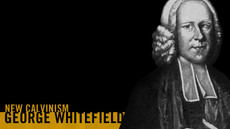 Pastor Mark has been examining the idea of One-ism vs. Two-ism recently over on TheResurgence. Make sure you check out his previous post, in which we saw how the Truth and the Lie of Romans 1:25 can be understood as a simple contrast between one-ism and two-ism.
Pastor Mark has been examining the idea of One-ism vs. Two-ism recently over on TheResurgence. Make sure you check out his previous post, in which we saw how the Truth and the Lie of Romans 1:25 can be understood as a simple contrast between one-ism and two-ism.
As a worldview, one-ism is antithetical to Christian two-ism because it seeks to place everything in the one circle.
-
There is no distinction between God the creator and creation. This results in pantheism and panentheism, which even some young "Christian" pastors are advocating.
-
There is no distinction between God and mankind. This results in a spirituality that does not look humbly out to God for salvation, but rather arrogantly looks in to self for enlightenment.
-
There is no distinction between good and evil. This results in the claim that all we have are perspectives, opinions, and culturally embedded "values"; there are no timeless moral truths that apply to all peoples, times, and places because all that is left is situational ethics. Furthermore, there is no distinction between angels and demons because all spirits and spiritualities are considered only good.
-
There is no distinction between mankind and animals. This results in radical animal rights activism, people referring to their pet as their "baby," and, in some cities, a disdain for children but a love for animals expressed as doggie spas, doggie day cares, and legislation to allow animals to eat in restaurants with their owners.
-
There is no distinction between mankind and creation. This results in radical environmentalism that moves beyond stewarding creation to deifying creation as our "Mother Earth" and an opposition to cultivating creation for human life and culture.
-
There is no distinction between men and women; gender is reduced to asexual androgyny. This results in lesbianism, transgenderism, homosexuality, cross-dressing, and the like, which Romans 1 says is the logical conclusion of idolatry.
-
There is no distinction between religions. The result is a vague pagan spirituality that believes the answers to all the world’s problems are religious and spiritual in nature and can only be overcome by all religions worshiping together as one. Subsequently, a Christian who makes distinctions (such as between God and man, Jesus and Satan, angels and demons, heaven and hell, man and animals, holiness and sin, the Bible and other texts, male and female, heterosexuality and homosexuality, truth and error, good and evil) is considered a fundamental threat to the utopian world of peace, love, and oneness.
While idolatry is manifested externally, it originates internally. This is first revealed in
Ezekiel 14:1–8 as God rebukes the elders of Israel who "have taken their idols into their hearts." Indeed, before people see an idol with their eyes, hold it with their hands, or speak of it with their lips, they have taken it into their heart. What this means is that they have violated the first two of the Ten Commandments, choosing something as a functional god they long for in their heart and then worshiping it by their words and deeds.
From Doctrine: What Christians Should Believe, pp. 344–346.
To learn more about one-ism and two-ism and see how it plays out in all kinds of ways in our church and culture, come to the Exchange conference. Mark Driscoll, Peter Jones, Francis Chan, Kevin DeYoung, and others will teach you how to distinguish the Truth from the Lie in all of life. Exchange is June 17 & 18 in San Diego, California. Find out more. Pastor Mark has been examining the idea of One-ism vs. Two-ism recently over on TheResurgence. Make sure you check out his previous post, in which we saw how the Truth and the Lie of Romans 1:25 can be understood as a simple contrast between one-ism and two-ism.
As a worldview, one-ism is antithetical to Christian two-ism because it seeks to place everything in the one circle.
Pastor Mark has been examining the idea of One-ism vs. Two-ism recently over on TheResurgence. Make sure you check out his previous post, in which we saw how the Truth and the Lie of Romans 1:25 can be understood as a simple contrast between one-ism and two-ism.
As a worldview, one-ism is antithetical to Christian two-ism because it seeks to place everything in the one circle.












